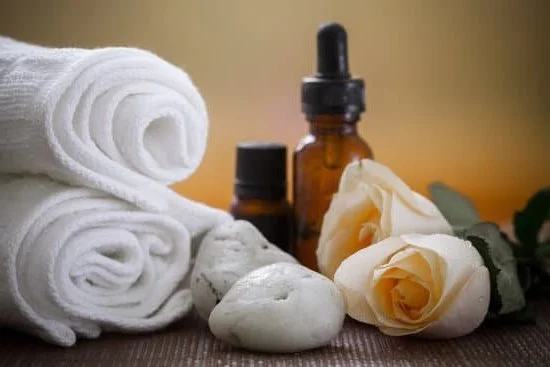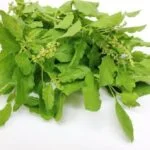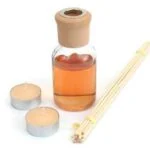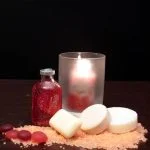Aromatherapy has been used for centuries as a natural way to promote physical and emotional well-being. One essential oil that has gained popularity in the world of aromatherapy is tea tree oil. In this article, we will explore how to use aromatherapy tea tree oil to harness its therapeutic benefits and enhance your daily life.
Tea tree oil, also known as melaleuca oil, is derived from the leaves of the Melaleuca alternifolia plant native to Australia. It is renowned for its antimicrobial, antiseptic, and anti-inflammatory properties, making it a key player in natural wellness practices. When used in aromatherapy, tea tree oil offers a myriad of benefits for both the body and mind.
Aromatherapy itself has evolved over time from traditional practices to modern-day applications, offering a holistic approach to health and wellness. By understanding the historical significance of aromatherapy and the value of using essential oils in a therapeutic way, we can unlock the full potential of tea tree oil for our overall well-being. We will delve into its origin, benefits in aromatherapy, and why it is important to incorporate this powerful essential oil into our daily routines.
Understanding the Power of Aromatherapy
How Aromatherapy Works
Aromatherapy is a holistic healing treatment that uses natural plant extracts to promote health and well-being. When these essential oils are inhaled, aromatherapy can have a profound impact on the body and mind.
The molecules from the essential oils enter the nasal cavity and stimulate the olfactory system, which then sends signals to the limbic system – the part of the brain that controls emotions, memories, and behaviors. This process can help to relieve stress, improve sleep quality, manage pain, and improve mood.
The Science Behind Aromatherapy Benefits
Scientific research has shown that certain essential oils used in aromatherapy have therapeutic properties. For example, tea tree oil has antibacterial, antifungal, and anti-inflammatory properties. When inhaled or applied topically in a diluted form, it can help alleviate symptoms of various conditions such as acne, athlete’s foot, and minor skin irritations. Additionally, studies have also indicated that inhaling aromas can stimulate certain parts of the brain to promote relaxation or boost energy levels.
Different Methods of Using Aromatherapy
There are several ways to use essential oils for aromatherapy, including through diffusers (which disperse scents into the air), inhalation (directly breathing in the scent), or topical application (diluted with a carrier oil and applied to the skin). Each method offers its unique benefits – diffusers create a calming environment at home or work; inhalation can provide quick relief during stressful situations; and topical application allows for targeted relief for specific physical concerns.
By understanding how aromatherapy works on both a physiological and psychological level, individuals can harness the power of tea tree oil to enhance their overall well-being. Learning how to use aromatherapy tea tree oil can be an excellent addition to anyone’s self-care routine.
Choosing the Right Tea Tree Oil
Tea tree oil, a popular essential oil used in aromatherapy, is known for its antibacterial and antifungal properties. When it comes to using tea tree oil for therapeutic purposes, it is essential to choose the right type of oil to ensure safety and effectiveness.
To begin with, it is crucial to look for tea tree oil that is labeled as “100% pure” or “therapeutic grade.” This ensures that the oil has not been diluted or mixed with synthetic fragrances, which can reduce its potency. Additionally, reputable brands that specialize in essential oils are a good choice when looking for high-quality tea tree oil.
When purchasing tea tree oil for aromatherapy use, it’s important to consider the source of the oil as well. High-quality tea tree oil is typically sourced from Australia, where the tea tree plant (Melaleuca alternifolia) is native. Due to strict regulations and standards in Australia, tea tree oils produced in this country are generally considered of superior quality.
In order to identify pure and therapeutic-grade tea tree oil, one can also look at the color and consistency of the oil. Pure tea tree oil should have a clear to pale yellow color and a thin consistency. If the oil appears cloudy or has an unusually thick texture, it may be an indication that it has been adulterated.
| Aspect | Description |
|---|---|
| Labeling | Look for “100% pure” or “therapeutic grade” |
| Source | Australian-sourced oils are generally of higher quality |
| Color and Consistency | Pure tea tree oil should be clear to pale yellow with a thin consistency |
Aromatherapy Blends and Recipes
Creating Personalized Blends With Tea Tree Oil
To create personalized aromatherapy blends, it is important to understand the properties of tea tree oil and how it can complement other essential oils. For relaxation, tea tree oil can be blended with lavender or chamomile for a soothing effect. To boost immunity, it can be combined with eucalyptus or peppermint for respiratory support. For skincare, tea tree oil can be mixed with jojoba or coconut oil for blemish control.
Recipes for Different Purposes
There are countless recipes available for different purposes when using tea tree oil in aromatherapy. For relaxation, a simple blend of 3 drops of tea tree oil, 4 drops of lavender oil, and 2 drops of bergamot oil can be added to a diffuser for a calming atmosphere. For skincare, a homemade acne spot treatment can be made by mixing 1 drop of tea tree oil with 1 teaspoon of witch hazel and applying directly to blemishes.
Safety Precautions and Guidelines
When creating aromatherapy blends using tea tree oil, it is important to follow safety precautions and guidelines. Tea tree oil should always be diluted before applying it to the skin to avoid irritation. It is recommended to perform a patch test before using any new blend topically. Additionally, using the correct dosage is crucial in preventing adverse reactions.
By understanding how to create personalized blends, following proper recipes for different purposes, and adhering to safety precautions and guidelines, individuals can effectively incorporate the benefits of aromatherapy tea tree oil into their daily lives.
Using Tea Tree Oil for Emotional and Mental Well-Being
Tea tree oil is well-known for its calming and soothing properties, making it a popular choice for aromatherapy to promote emotional and mental well-being. When used in aromatherapy, tea tree oil can help reduce stress and anxiety, improve mood, and promote relaxation. The use of essential oils like tea tree oil for emotional support has been practiced for centuries and continues to be a valuable tool for holistic wellness.
One effective way to use tea tree oil for emotional well-being is through inhalation. By adding a few drops of tea tree oil to a diffuser or inhaling it directly from the bottle, you can experience its uplifting effects on your mood. Additionally, incorporating tea tree oil into mindfulness practices such as meditation or yoga can enhance the calming benefits of these activities.
It is important to note that while tea tree oil can provide emotional support, it should not be used as a replacement for professional treatment of mental health conditions. It can be an excellent complementary tool when used alongside other forms of therapy or healthcare interventions. As with any essential oil, it is necessary to follow safety guidelines and ensure proper dilution when using tea tree oil for emotional and mental well-being purposes.
| Benefits | How to Use |
|---|---|
| Reduces stress and anxiety | Inhale directly from the bottle or use in a diffuser |
| Improves mood and promotes relaxation | Incorporate into mindfulness practices such as meditation or yoga |
| Enhances emotional support when used alongside other therapies | Follow safety guidelines and ensure proper dilution |
Tea Tree Oil as a Natural Remedy
Tea tree oil, also known as melaleuca oil, has been used for centuries as a natural remedy due to its powerful antimicrobial and antiseptic properties. When it comes to aromatherapy, tea tree oil is a versatile essential oil that can be utilized for various therapeutic purposes. Whether it’s for treating minor cuts, scrapes, insect bites, or simply as a natural alternative to chemical-based products, tea tree oil has numerous benefits.
Here are some ways on how to use aromatherapy tea tree oil as a natural remedy:
- Topical Application: Tea tree oil can be diluted with a carrier oil such as coconut oil or jojoba oil and applied directly to the skin to treat minor cuts, scrapes, and insect bites. It can also be added to homemade lotions and salves for its antiseptic properties.
- Inhalation: Adding a few drops of tea tree oil to a bowl of hot water and inhaling the steam is another way to utilize its antimicrobial properties for respiratory issues such as congestion and coughs.
- Mouthwash: Due to its antibacterial properties, tea tree oil can be added to water as a mouthwash for treating bad breath or oral infections.
It’s important to note that when using tea tree oil as a natural remedy, it should always be used with caution and in the appropriate dilution. This essential oil is potent and can cause skin irritation if not properly diluted. Additionally, it’s recommended to do a patch test before using tea tree oil topically.
Incorporating tea tree oil into your natural remedies toolkit not only provides an effective solution for common ailments but also promotes the use of natural alternatives in daily self-care practices. With its wide range of uses, tea tree oil continues to be an essential component in holistic wellness and aromatherapy.
How to Use Aromatherapy Tea Tree Oil for Skincare
Tea tree oil is a versatile essential oil that has been used for centuries in aromatherapy and skincare. When it comes to skincare, tea tree oil is particularly renowned for its ability to combat acne and blemishes, making it a popular choice for those looking for natural remedies. Here’s how you can effectively use aromatherapy tea tree oil for skincare:
- Benefits of tea tree oil for acne and blemish-prone skin:
- DIY recipes for facial cleansers, toners, and moisturizers:
- Precautions and dilution guidelines for using tea tree oil on the skin:
Tea tree oil is known for its antimicrobial and anti-inflammatory properties, making it an effective solution for treating acne. It can help reduce redness, swelling, and inflammation associated with acne breakouts.
You can create your own homemade skincare products using tea tree oil. For example, you can add a few drops of tea tree oil to your daily facial cleanser or mix it with witch hazel to create a refreshing toner. Additionally, adding a few drops of tea tree oil to a carrier oil such as jojoba or coconut oil can create a moisturizer that helps control excess sebum production on the skin.
It’s important to note that tea tree oil should never be applied directly to the skin without being diluted with a carrier oil. The general rule of thumb is to use one drop of tea tree oil per teaspoon of carrier oil. This helps prevent any potential skin irritation or sensitivity.
Overall, incorporating aromatherapy tea tree oil into your skincare routine can be beneficial in promoting clear and healthy skin. Its natural properties make it a great alternative to chemical-based products, providing individuals with an effective solution for addressing various skin concerns.
While using aromatherapy tea tree oil in skincare may require some experimentation to find what works best for your individual needs, the results could be well worth the effort when you achieve clearer and healthier skin without relying on harsh chemicals or treatments.
Conclusion
In conclusion, it is evident that aromatherapy tea tree oil can be a valuable addition to anyone’s daily life. Through the power of essential oils and the therapeutic benefits of tea tree oil, individuals can experience improved emotional, mental, and physical well-being. With the knowledge of how to use aromatherapy tea tree oil effectively, individuals can create personalized blends for various purposes such as relaxation, skincare, and immunity.
Incorporating aromatherapy into your daily routine is a simple yet impactful way to prioritize self-care and overall wellness. Whether it’s through diffusing tea tree oil with a quality diffuser, applying it topically for its antimicrobial properties, or using it in DIY skincare recipes, there are numerous ways to integrate the benefits of aromatherapy tea tree oil into your daily life.
By understanding the importance of quality and purity when choosing tea tree oil and following safety precautions for usage, individuals can fully enjoy the therapeutic advantages of this essential oil.
Furthermore, I encourage readers to explore the world of aromatherapy with an open mind and a willingness to experiment with different blends and applications of tea tree oil. By taking small steps to incorporate aromatherapy into daily routines, individuals can experience its transformative effects on their lives. Ultimately, by understanding how to use aromotherapy tea tree oil effectively and safely, individuals have the opportunity to enhance their overall well-being through the natural remedies that this essential oil offers.

Are you looking for a natural way to improve your health and wellbeing?
If so, aromatherapy may be the answer for you.





